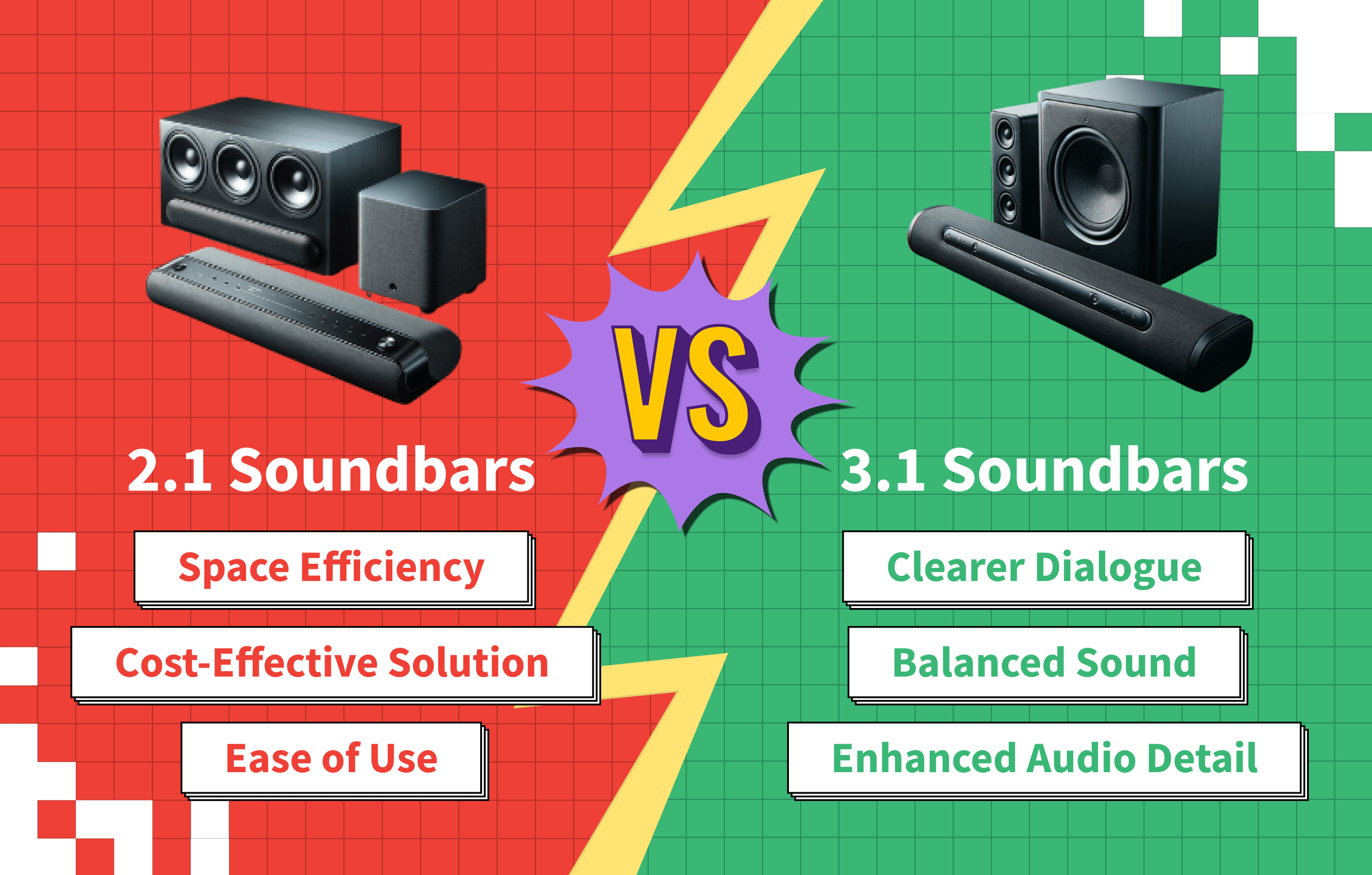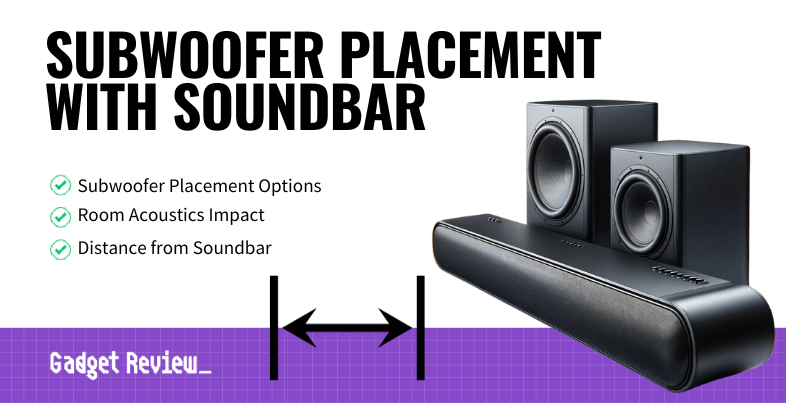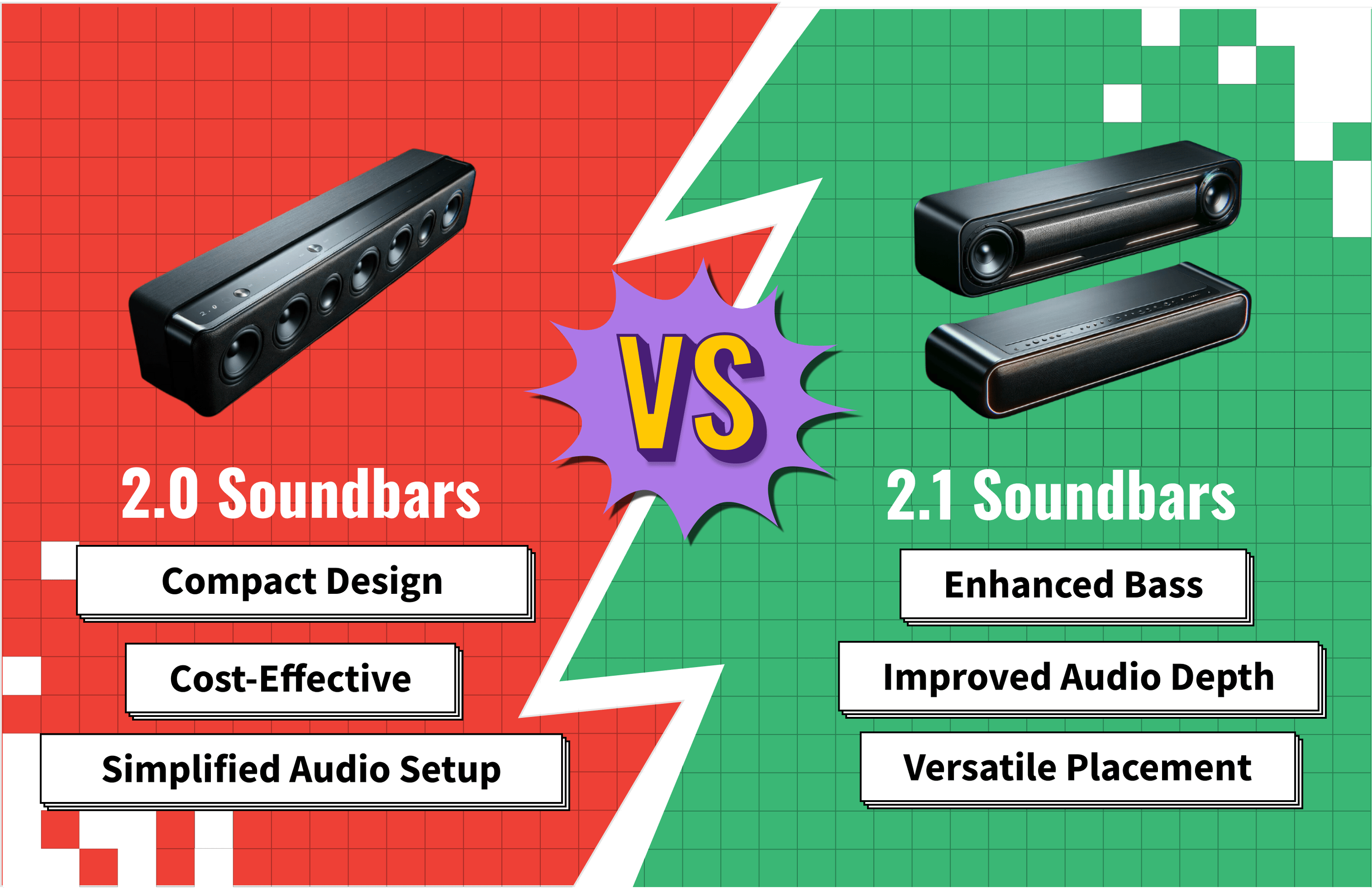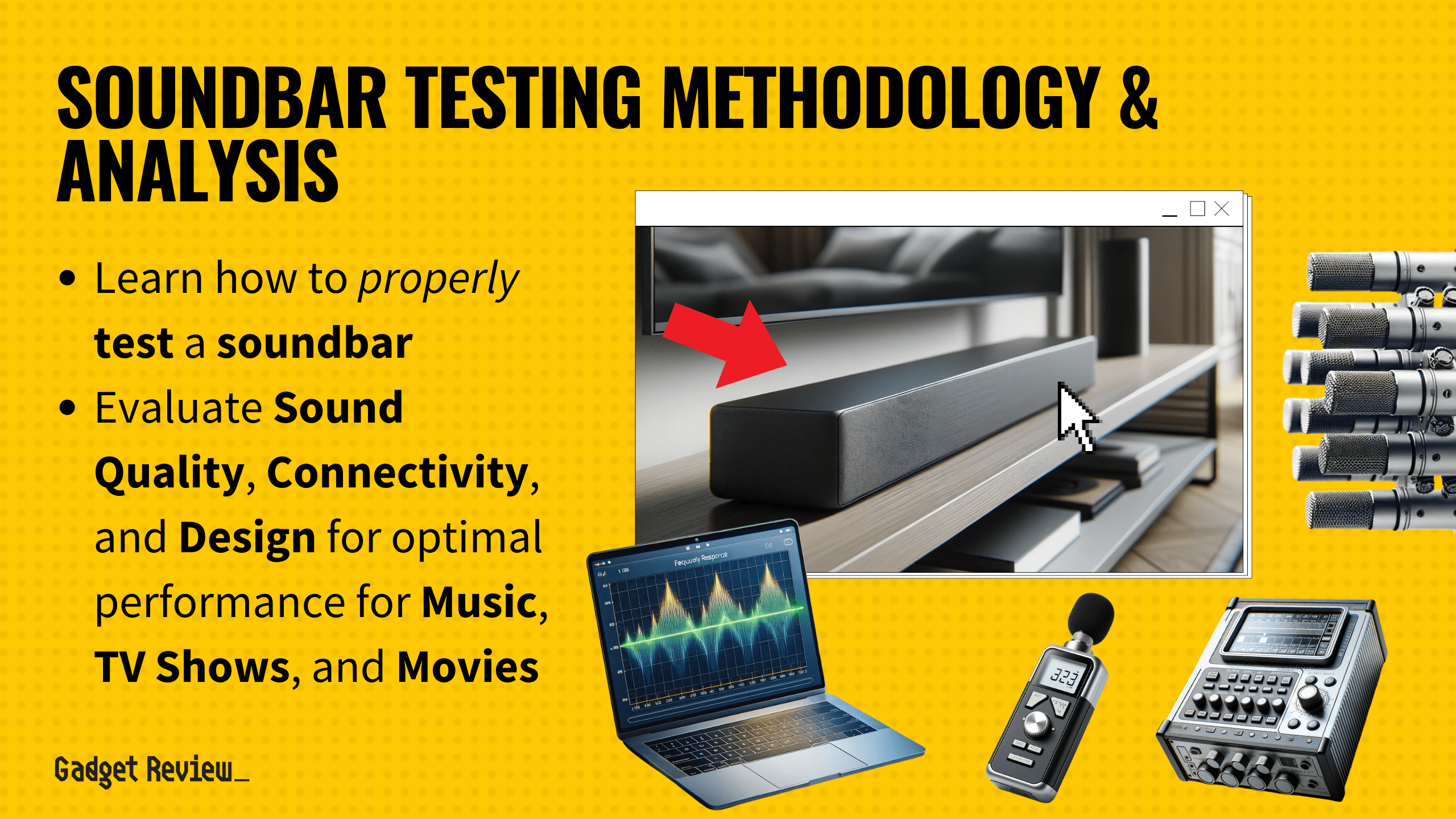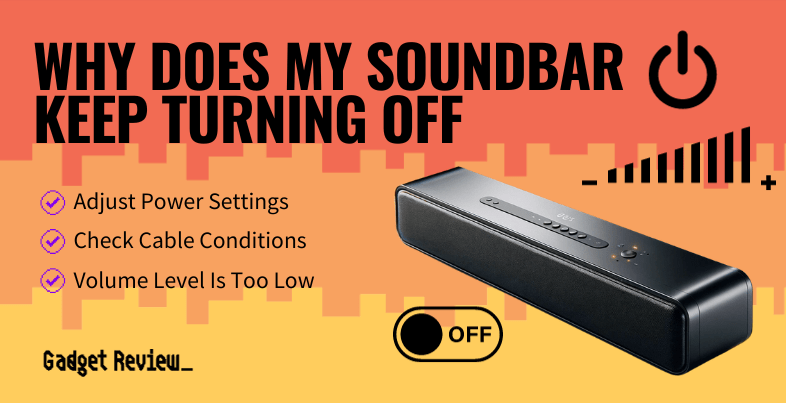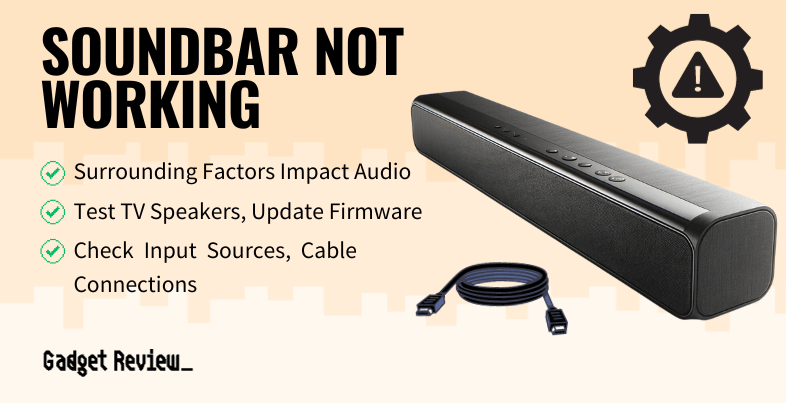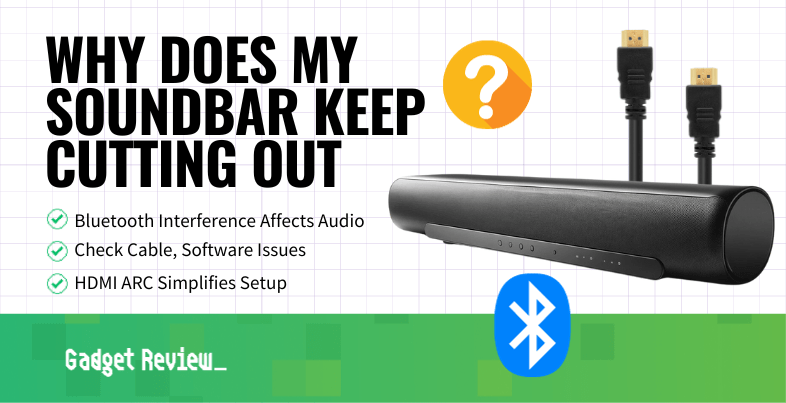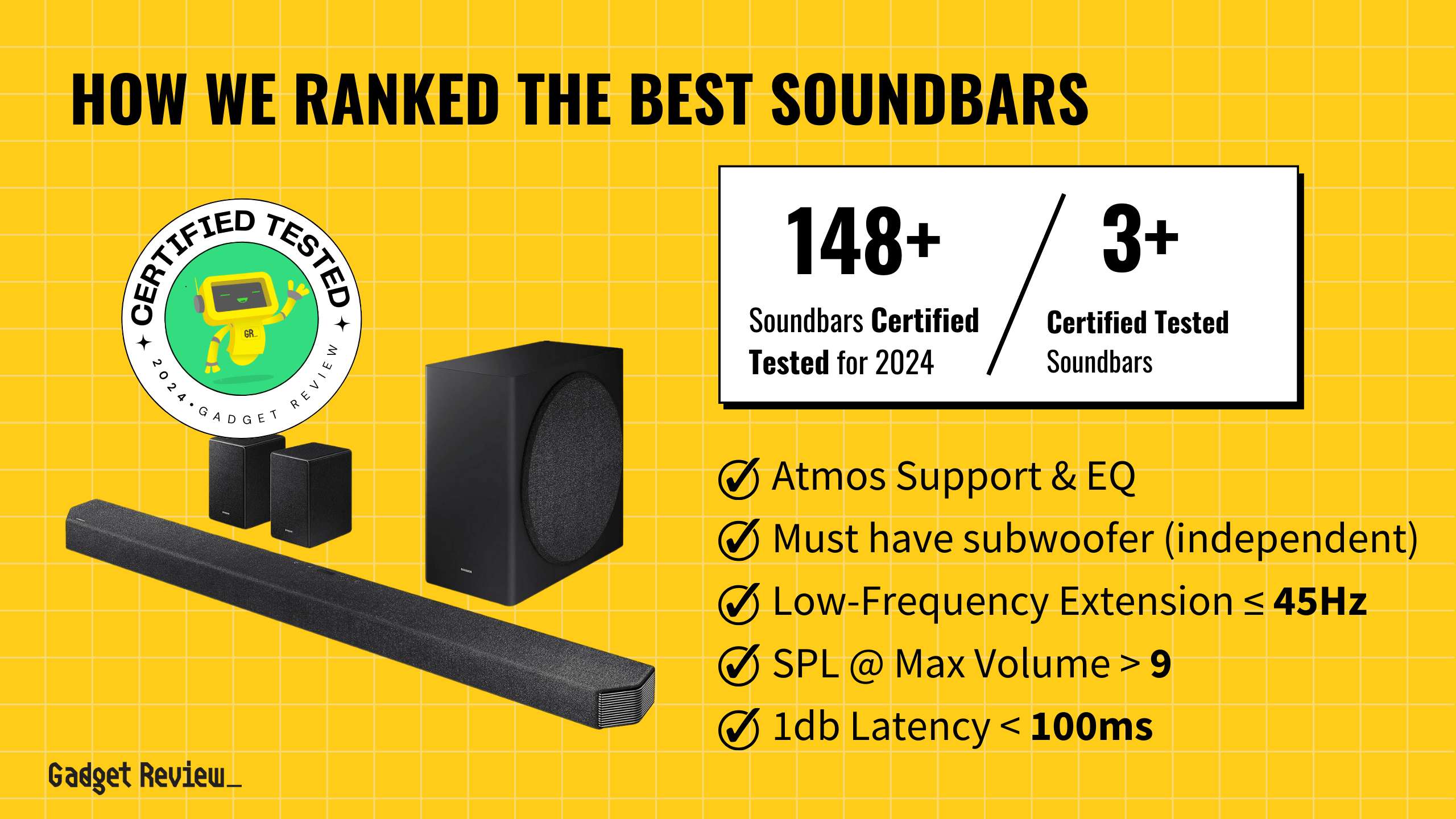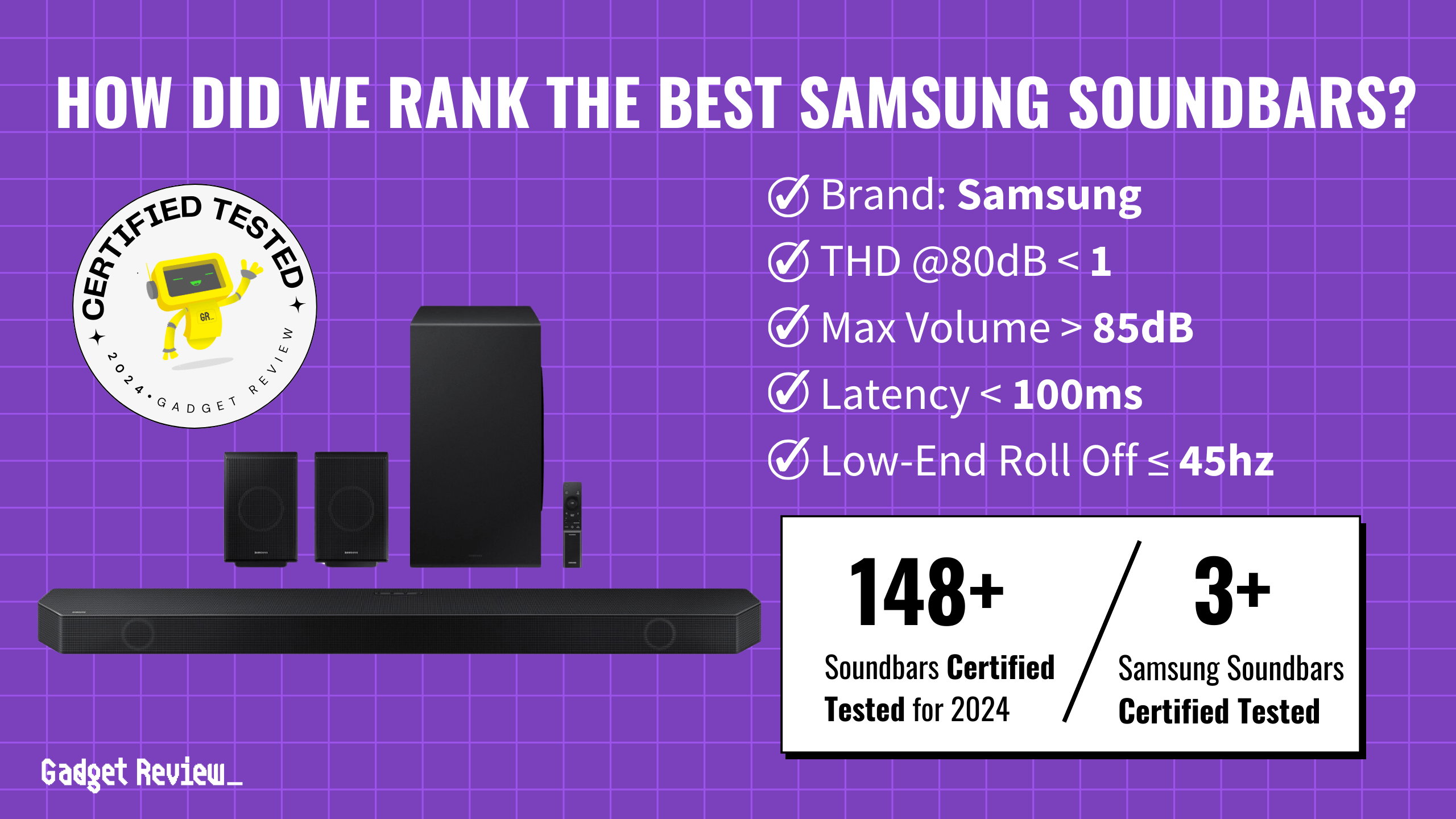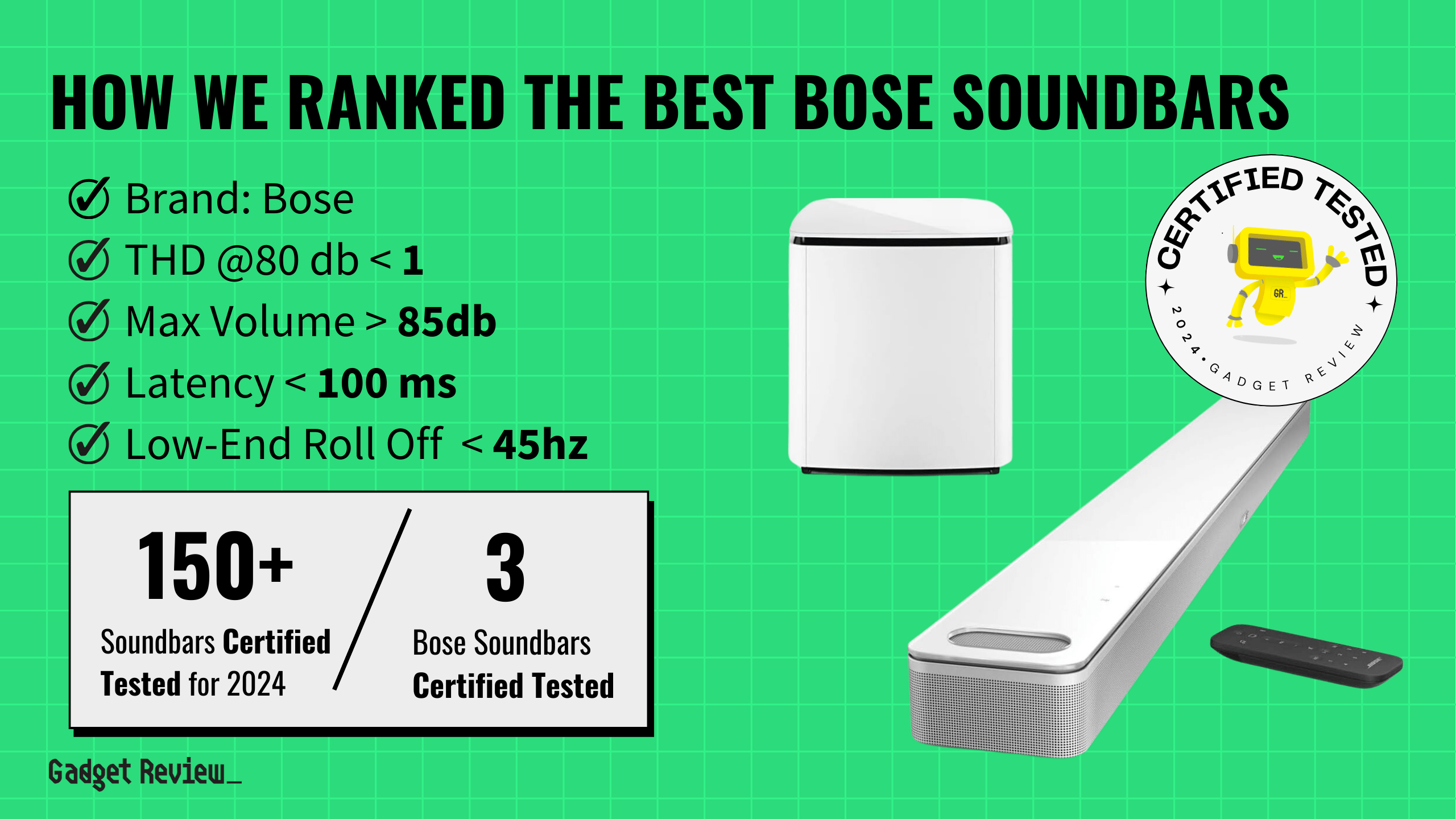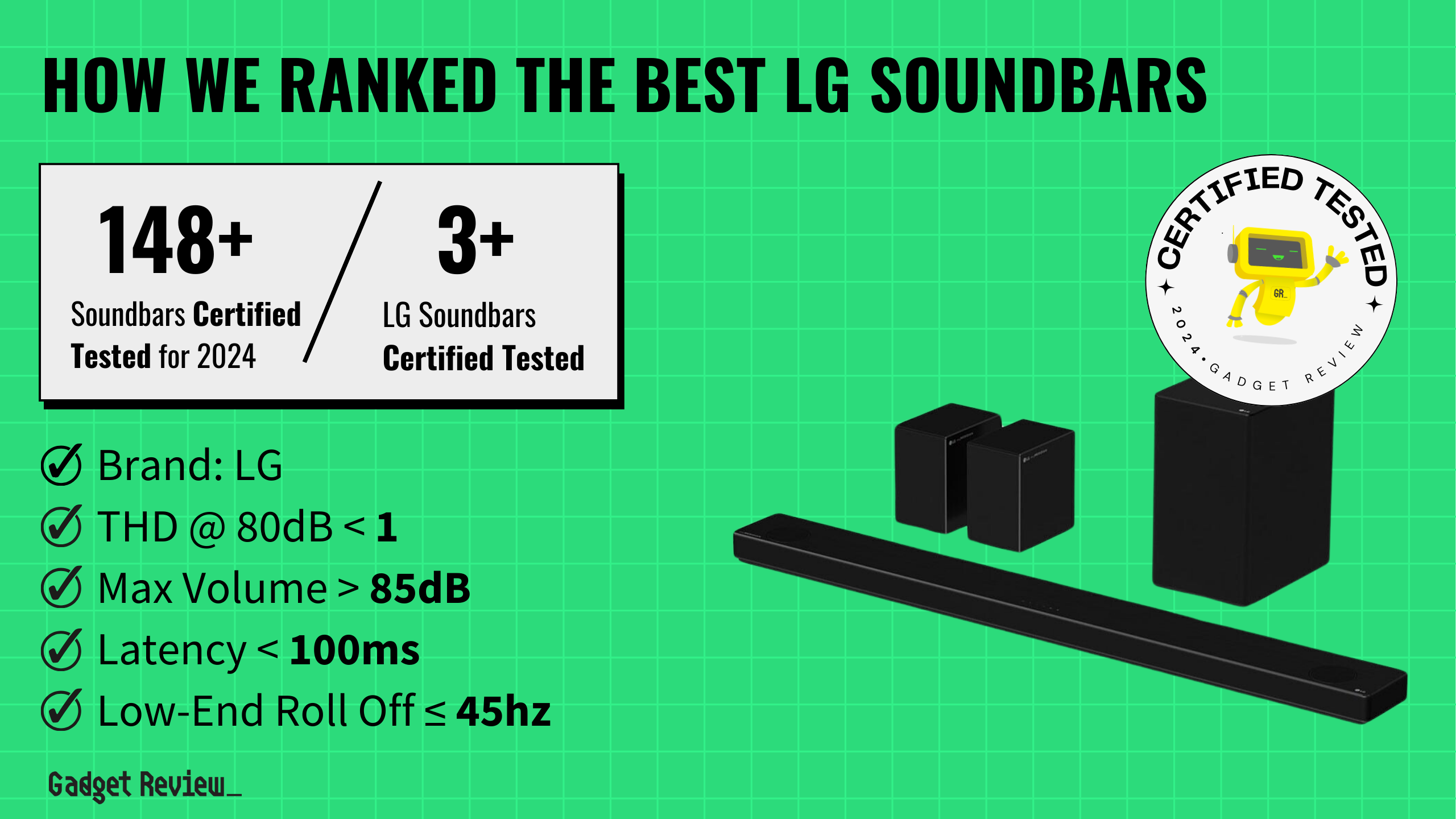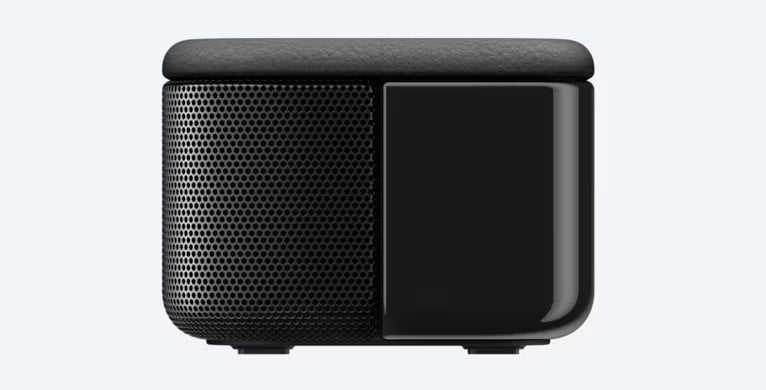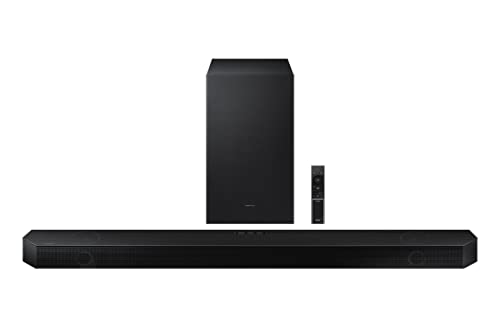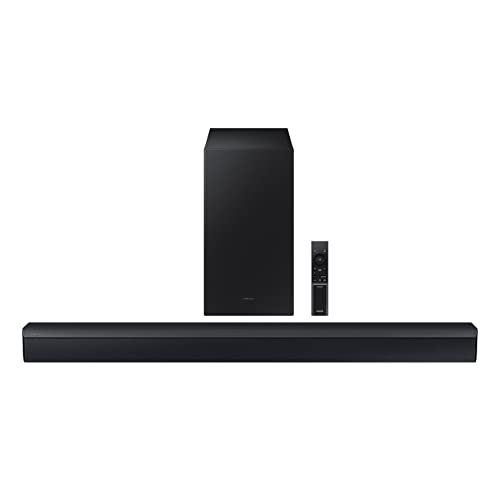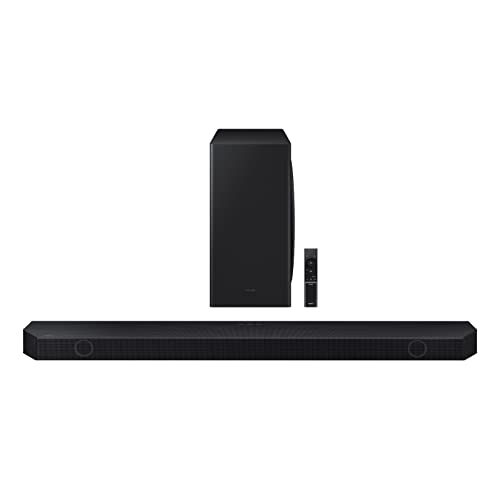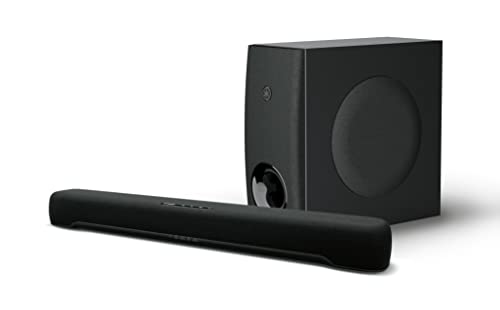When it comes to improving your home theater experience with the best speakers, you may already be set on investing in a top-rated soundbar. But there are a few types of soundbars on the market, and the choice between a 2.1 and a 3.1 soundbar could make a big difference.
The main difference is that a 2.1 soundbar has two channels and a subwoofer, while a 3.1 soundbar has three channels and a subwoofer. 3.1 soundbars produce better sound quality than 2.1’s, but they tend to be more expensive.
Comparing 2.1 Vs 3.1 Soundbars
Let’s compare a 2.1 soundbar and a 3.1 soundbar side-by-side across all their features, from sound quality, design, connectivity, etc.
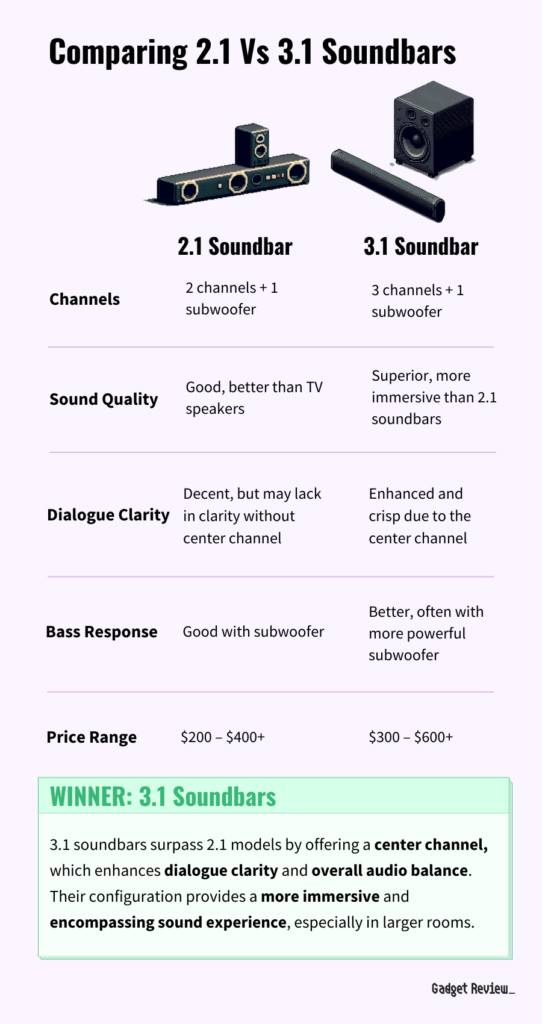
What’s A 2.1 Soundbar?
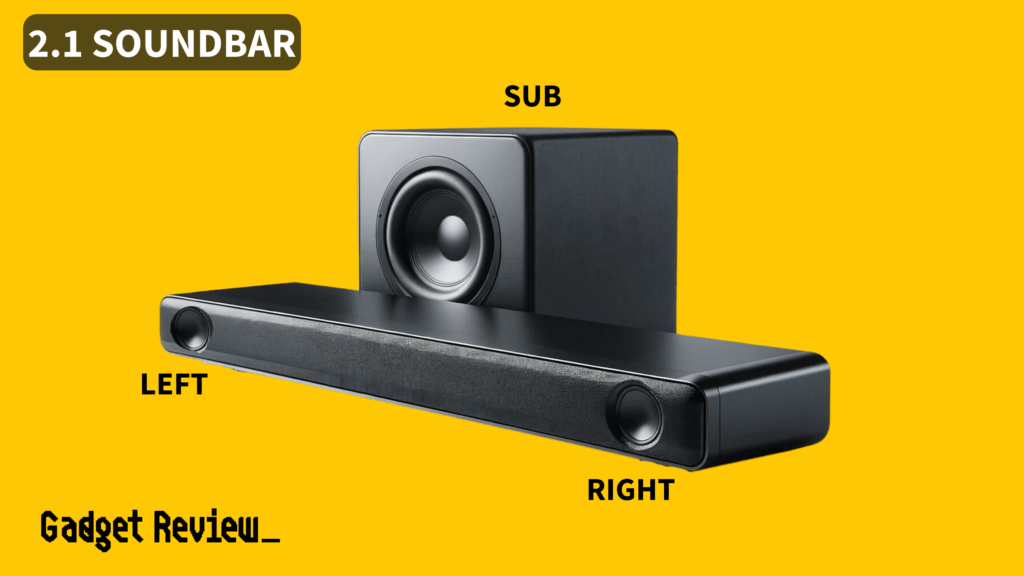
If you’re after more detail on each type, let’s define each soundbar a little more.
A 2.1 soundbar, which typically connects to your receiver or TV, features two channels usually placed on the right and left side, in addition to an external subwoofer. That ‘1’ signifies the presence of one subwoofer, and this number might vary. If you don’t want a subwoofer, consider the top soundbars without a subwoofer and compare 2.0 vs 2.1 soundbars.
The 2.1 soundbar’s channels are focused on producing sound effects while the subwoofer takes care of the low-frequency sounds or the bass. They do not include a center channel, though. So if you’re an avid fan of clear dialogues and vocal sounds, you might find this setup lacking.
You see, most TVs’ built-in speakers aren’t made to deliver high-quality sound. But with a 2.1 soundbar, sound effects and dialogues become more pronounced, giving you a better audio experience than your TV could ever provide alone.

warning
Not all soundbars come with an internal or external subwoofer, so you may have to purchase one separately.
In terms of price, 2.1 soundbars generally come cheaper than 3.1 models. Size-wise, they are more compact and versatile for any space, be it wall mounted or placed on a shelf. Wired soundbars tend to be more affordable than wireless ones. Soundbars often feature HDMI ARC connectivity, allowing for a single cable solution to transmit high-quality audio, while also providing options for traditional optical cables for versatile audio setups.
Then What’s A 3.1 Soundbar?
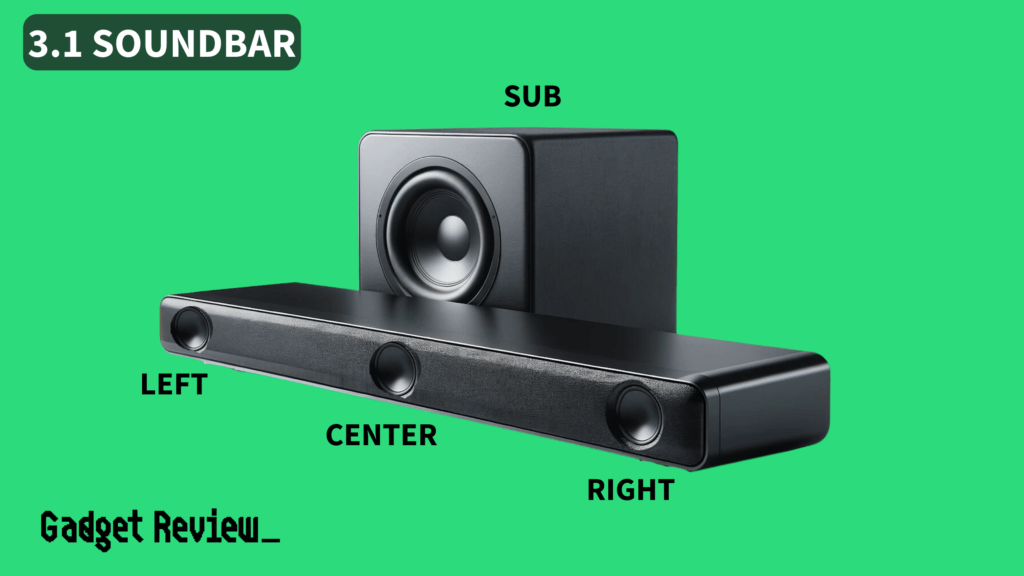
On the flip side, we’ve got the 3.1 soundbar. The key difference lies in the addition of a center channel in this model. The soundbar has three audio channels: left, right, and center, plus a subwoofer. With a dedicated center channel, dialogues come out crisp and clear, since this channel primarily focuses on dialogue audio.
While a 3.1 soundbar can deliver better quality sound due to the additional channel, it also comes at a higher price point than most 2.1 models. They also demand more space because of their size. Some popular 3.1 soundbars, like Samsung models, feature HDMI connectivity for easy setup and high-quality audio output.
If you want to look into larger soundbar systems with more immersive sound, compare 2.1 vs 5.1 soundbar as well.
insider tip
For the best audio experience, get a soundbar with a third number, such as 7.1.2. The third number means the soundbar has additional channels for ceiling and rear speakers.
So how does a 3.1 soundbar affect your cinematic experience? Imagine watching an action movie with explosive sound effects coming from the left and right channels, while your favorite actors’ dialogues come out clear and focused from the center channel. All this while experiencing the booming, room-filling bass from the subwoofer.
If you want an even more theater-like sound, some 3.1 soundbars also support Dolby Atmos. But remember, having all these added features could increase the price a little more.
Keep in mind that with price, a premium-brand 2.1 may surprisingly cost more than a mid-range 3.1 option.
STAT: For the best audio experience, get a soundbar with a third number, such as 7.1.2. The third number means the soundbar has additional channels for ceiling and rear speakers.
Final Verdict
After weighing the pros and cons, it’s clear that both 2.1 and 3.1 soundbars have their unique strengths. If you’re a casual listener or have a small space, a 2.1 soundbar might be your best bet. It’s compact, efficient, and offers a solid sound performance.
But if you’re after a more immersive audio experience, particularly for movies and TV shows, then a 3.1 soundbar is an excellent option. It’s got that dedicated center channel that enhances dialogue clarity. Plus, with Dolby Atmos support, you’re in for a superior cinematic sound experience.
Remember, it all boils down to your individual needs, preferences, and budget.

